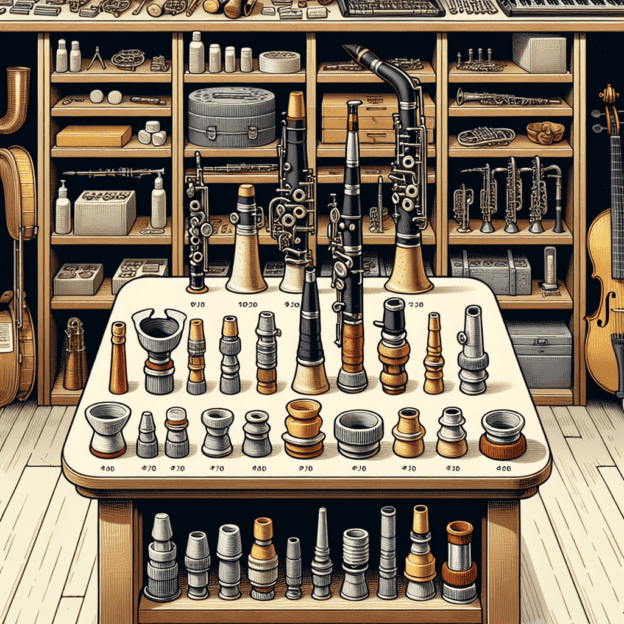The clarinet mouthpiece plays a key role in shaping the tone and playability of the instrument. Musicians at all levels often wonder which mouthpiece type best suits their playing style. Understanding the basic differences between clarinet mouthpiece types and how each affects your sound is important, given the wide variety available.
This guide explores the various types of clarinet mouthpieces, looking at factors like material, design, and the unique qualities they bring to a player's sound. Choosing the right mouthpiece can make a big difference in your performance, much like fine-tuning any musical instrument.
Types of Clarinet Mouthpieces
Clarinet mouthpieces can be grouped based on their materials, design, and intended use:
1. Material Types
- Hard Rubber Mouthpieces: These are widely popular. They're durable and produce a warm, rich sound, making them a favorite among both beginners and professionals.
- Plastic Mouthpieces: Common in student models, plastic mouthpieces are light and affordable. While they may lack the sound depth of rubber or wood, they're great for new players learning the basics.
- Wood Mouthpieces: Less common, wood mouthpieces offer a unique sound quality. They need careful handling and upkeep, making them better suited for experienced players who can properly care for their instruments.
- Metal Mouthpieces: These create a bright, sharp sound. They're often used in specific playing styles but may not fit well with classical music.
| Material | Sound Quality | Durability | Best For |
|---|---|---|---|
| Hard Rubber | Warm, rich | High | All levels |
| Plastic | Basic | Medium | Beginners |
| Wood | Unique, resonant | Low | Advanced players |
| Metal | Bright, sharp | High | Specialized styles |
2. Design Variations
- Bore Size: Mouthpieces have different internal bore sizes, affecting air flow and sound projection. A wider bore can give more power and fullness to the tone, while a narrower bore might improve control and precision.
- Tip Opening: This refers to the gap between the mouthpiece tip and the reed. A wider opening allows more airflow, making sound production easier but possibly harder to control. A smaller opening gives less airflow, making dynamics easier to control but requiring more effort to produce sound.
- Facing Length: This determines how the reed interacts with the mouthpiece. A longer facing often results in a smoother tone, while a shorter facing might create a brighter sound.
3. Specialty Mouthpieces
Many clarinetists try specialty designs to find a unique sound. For instance:
- Jazz Mouthpieces: These are made to boost the bright sounds needed for jazz. They usually have larger tip openings and special facings for more style and dynamic flexibility.
- Classic & Orchestral Mouthpieces: Popular in classical music, these mouthpieces aim for a warm, round tone with a smaller tip opening and controlled responsiveness.
Choosing the Right Mouthpiece
When picking a mouthpiece, think about your playing style, genre, and what feels comfortable. Here are some tips to help you choose:
- Try Before You Buy: If you can, test several mouthpieces in-store or at workshops. Play each one with your clarinet to see how it feels and sounds.
- Ask Professionals: Chat with your teacher or other musicians about what they like and have experienced. Personal advice can be very helpful.
- Look into Brands: Different brands are known for different qualities and sounds. Brands like Martin Freres have some great mouthpiece options to look at.
Maintenance and Care
Taking good care of your mouthpiece can make it last longer and keep the sound quality high:
- Clean Regularly: After each use, rinse your mouthpiece with warm water to get rid of moisture and bacteria. A soft brush can help with tough residue.
- Check for Wear: Often look for cracks or wear on the tip. If a mouthpiece is damaged, replace it soon to keep your performance at its best.
As you learn more about clarinet mouthpieces, remember that finding the right one can really improve your playing. Trying different types will help you get better and find your own unique sound.
Table of Contents
- Types of Clarinet Mouthpieces
- 1. Material Types
- 2. Design Variations
- 3. Specialty Mouthpieces
- Choosing the Right Mouthpiece
- Maintenance and Care







